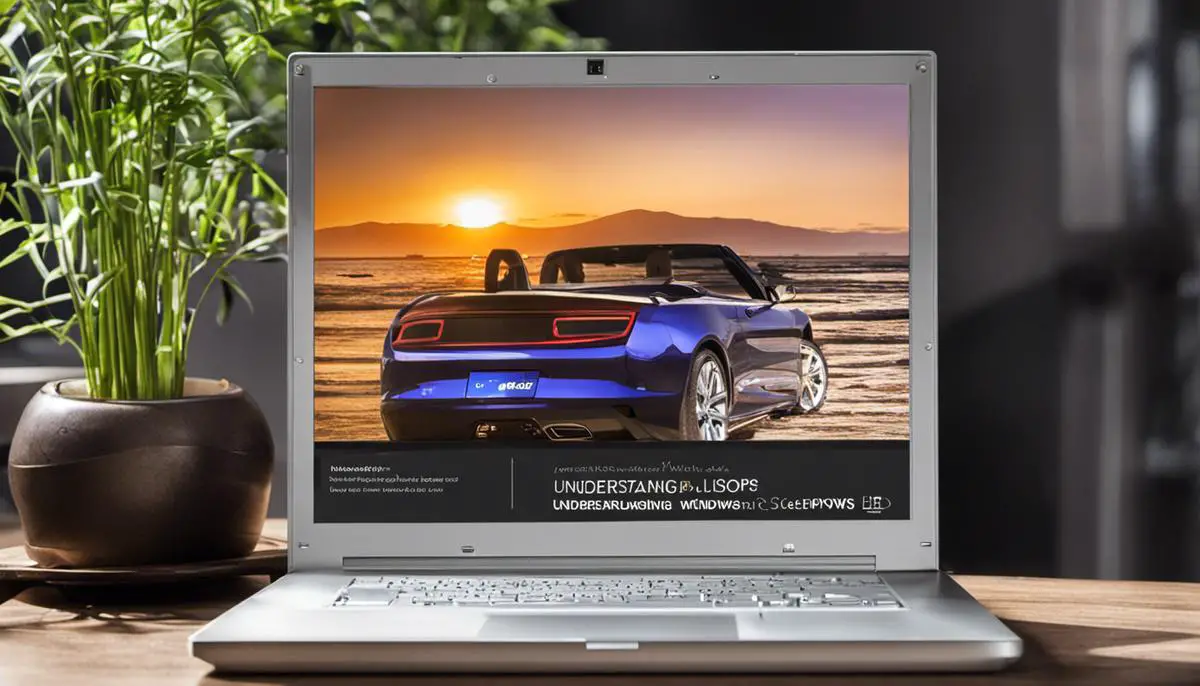Welcome to ‘Windows Laptop Mastery: The Definitive Guide’, your go-to resource for mastering the ins and outs of your Windows laptop.
With years of experience in tech and a deep understanding of the Windows operating system, I’ve carefully curated a guide that’s packed with actionable tips and insightful guidance.
Whether you’re looking to optimize your laptop for performance, increase your productivity, or troubleshoot common issues, this guide covers it all.
- Getting Started with Your Windows Laptop:
- Optimizing for Performance
- Hardware Optimization
- Software Updates and Installation
- Security Measures and Anti-Virus Solutions
- Managing Startup Programs for Improved Performance
- Maximizing Performance with Task Manager
- Tailoring Your Settings for Peak Performance
- Regularly Updating Your System
- Optimizing Disk Space
- Keeping Your Drivers Fresh
- Optimal Power Settings for Prolonged Battery Life
- Increasing Productivity
- Troubleshooting Common Issues
- Additional Security and Privacy
- Advanced Windows Features
- Frequently Asked Questions:
- Conclusion and Further Resources
In today’s digitally connected world, comprehensive knowledge of Windows laptops has become increasingly important. From dynamic hardware components to multifaceted software functionalities, understanding laptops, particularly those powered by Windows, serves as an invaluable skill.
Getting Started with Your Windows Laptop:
Unboxing and Initial Setup
The first step to mastering your Windows laptop is to correctly unbox and set it up. Ensure that you have all the necessary components: the laptop itself, the charger, and any other accessories that might be included in the box such as a stylus or an external mouse.
Start by connecting your laptop to a power source using the provided charger.
Press the power button, located usually on the upper right side of the keyboard, and let your computer boot up.
The initial setup unfolds like a welcoming ceremony. It asks you to choose your language, like choosing the dialect of your new digital native tongue.
You set up your Wi-Fi connection, confirming your tether to the online world. After reading and accepting the terms and conditions, you’re on to creating your user account.
Choose your username wisely; this will be your alias in the networked world, the name your device will respond to.
The setup process may feel mundane, but remember, you’re setting the foundations for an optimized user experience.
As you navigate through these steps, you are not just setting up a machine; you’re building a relationship with a device that’s going to be your companion, coworker, and entertainment hub.
Welcome to the world of Windows!
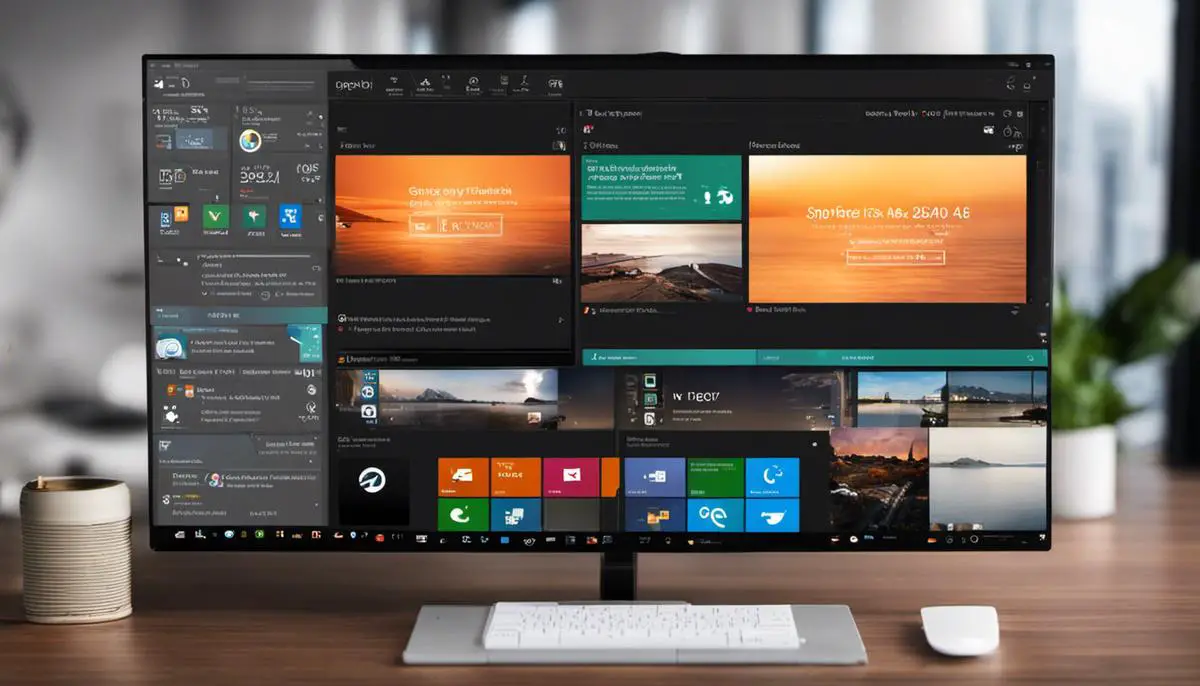
Photo by casparrubin on Unsplash
Understanding the Windows Interface
The Windows Interface, often referred to as the desktop, is the main screen you see when you boot up your laptop.
It consists of several components including the taskbar, start menu, and system tray.
The ‘Start Menu’, located at the bottom left corner of your screen, gives you access to all your apps, settings, and files. It’s essentially the gateway to your laptop’s capabilities.
The ‘Taskbar’ runs across the bottom of your screen and displays open applications, allowing you to easily switch between them.
On the right side of the taskbar is the ‘System Tray’, which houses notifications and quick settings like volume control, Wi-Fi, battery status, and the clock.
Basic Navigation Tips
Navigating your Windows laptop can be a breeze if you’re aware of some basic tips. Here are a few:
- ‘Alt + Tab’: This shortcut allows you to switch between open applications quickly.
- ‘Windows + E’: This opens the File Explorer, providing quick access to your files and folders.
- Right-clicking: This reveals additional options for an item. For example, right-clicking a file allows you to copy, delete, or rename it.
Remember, mastering these basics is the first step to becoming proficient with your Windows laptop. Practice these steps a few times until they become second nature.
In the next sections, we’ll delve into more advanced features to help you truly unlock the potential of your Windows machine.
Different Types of Laptops
Ultrabook:
An Ultrabook is a high-end laptop, with increased emphasis on speed and battery life. They often include business features and are built to be more portable and lightweight than the average laptop. Due to these features, Ultrabooks can be a little more expensive.
Notebooks:
Notebooks are often confused with Ultrabooks, but the key difference lies within their purpose. Notebooks are typically used for light computing, such as word processing or web browsing. They are designed to be compact and typically have limited hardware capabilities compared to other laptop types.
Gaming laptops:
Gaming laptops, however, come with high-end hardware like a powerful processor and a dedicated graphics card to handle resource-intensive games. They also feature specialized cooling systems to avoid overheating during lengthy gaming sessions.
Also Read: How To Optimize Windows 11 For Gaming
Business laptops:
Finally, business laptops are designed for long-term reliability, performance efficiency, and security. They often come equipped with additional features such as biometric scanners for added security and data encryption.
Each type of laptop caters to varying needs and specifications. Whether you opt for an Ultrabook, notebook, gaming laptop, or business laptop will all depend on how you plan to use your system primarily.
These laptops are designed to provide an optimal user experience to cater to your specific usage requirements, whether it’s for gaming, running business applications, or for general everyday use.
Optimizing for Performance
Get ready to supercharge your laptop’s performance. This next section will walk you through a trio of critical elements that can ramp up your Windows laptop’s performance to unprecedented heights.
We’ll look at three key areas: the realm of hardware tweaking, reveal the wizardry of software updates and installations, and help you fortify your precious digital fortress with effective security measures, including top-tier anti-virus solutions.
So buckle up, because we’re about to turn your everyday laptop into a high-performing, ultra-secure, productivity machine.
Hardware Optimization
Hardware optimization means getting the most out of the components that physically make up your laptop.
- Keep it clean: Dust and debris can negatively impact your laptop’s performance by clogging up fans and causing overheating. Regularly using compressed air to clean your laptop’s vents can help keep it cool and performing at its best. For example, I make it a habit to clean my own laptop every six months.
- Upgrade where possible: If your laptop’s performance is lagging, consider upgrading the hardware. Adding more RAM can speed up your laptop, and switching from a hard disk drive to a solid-state drive can drastically improve boot times and speed up file operations. I’ve personally experienced a significant difference after upgrading my old hard drive to an SSD.
Software Updates and Installation
Regular software updates are crucial for optimizing your laptop’s performance.
- Stay updated: Always keep your operating system and applications up to date. Updates often include performance enhancements and bug fixes that can keep your laptop running smoothly. I always make sure to install updates as soon as they become available.
- Install essentials only: Only install the software you need. Unnecessary applications can take up valuable storage space and slow down your laptop. I regularly check my installed programs and uninstall any I no longer use.
Security Measures and Anti-Virus Solutions
Proper security measures are a vital aspect of laptop optimization.
- Use an antivirus: Always have a reliable antivirus solution installed. It can help detect and remove harmful malware that can slow down your laptop. I’ve found that many of the best antivirus solutions also come with additional tools to help optimize your laptop’s performance.
- Be careful online: Avoid visiting suspicious websites or downloading software from untrusted sources. These can often be sources of viruses and malware. I always make sure to verify a website’s security before entering any personal information.
Managing Startup Programs for Improved Performance
To significantly boost the performance of your Windows laptop, it’s crucial to gain full control over your startup programs. These are the applications that are programmed to launch immediately after your system boots up. While some of these are necessary for your system’s functionality, others merely contribute to slower startup times and a decline in overall performance. Here’s a guide to managing these startup programs:
- Access Task Manager: The first step towards managing your startup programs is to open the Task Manager. This can be done by pressing “Ctrl+Shift+Esc” simultaneously.
- Navigate to the Startup tab: Once the Task Manager is open, head over to the tab labeled “Startup”. This is where you’ll find all the applications that are set to launch on startup.
- Evaluate each program: In the startup tab, take a good look at each application that’s enabled. Evaluate whether each program is essential to your regular laptop usage.
- Disable unnecessary programs: If you come across programs that aren’t necessary for your system’s functionality or your regular usage, select them and click on “Disable”.
By reducing the number of programs that automatically start up when you boot your laptop, you can significantly shorten its startup time, thereby enhancing the overall performance of your system.
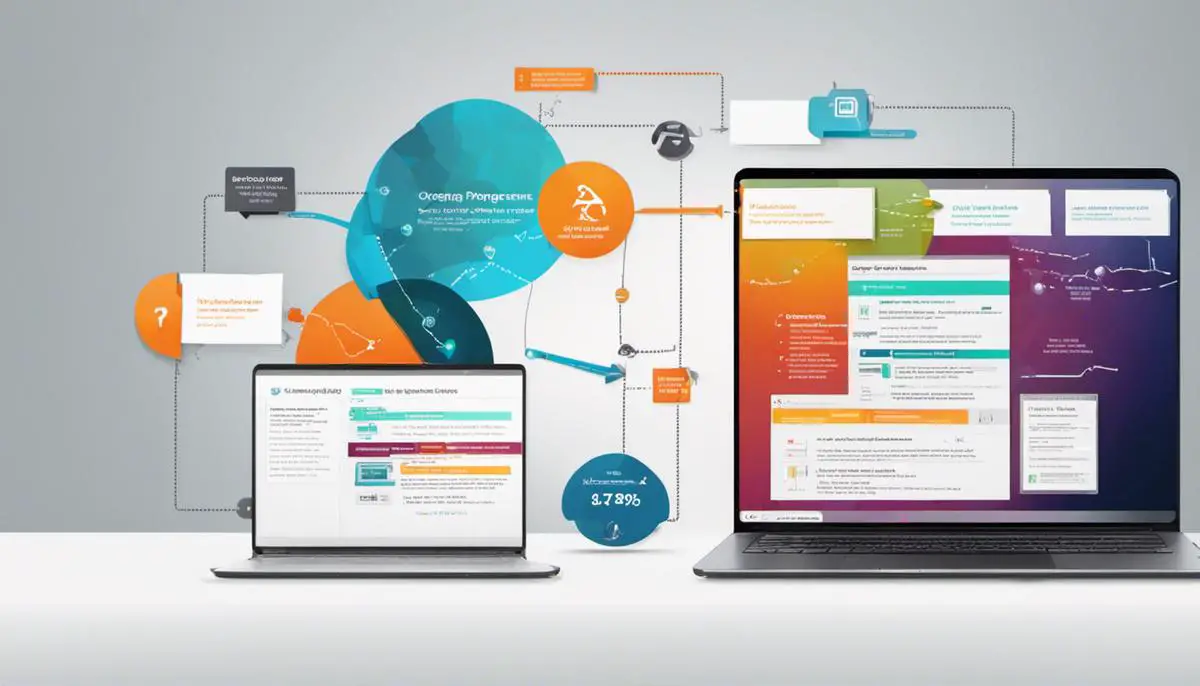
Maximizing Performance with Task Manager
The Task Manager is a potent tool you can leverage to enhance your laptop’s performance. It provides insights into the processes consuming your system’s resources, allowing you to manage them effectively. Here’s a step-by-step guide on how to utilize the Task Manager:
- Opening Task Manager: Kick-off by launching the Task Manager. You can do this by simultaneously pressing “Ctrl+Shift+Esc” keys.
- Navigating to Processes Tab: Once the Task Manager is in view, locate and click on the “Processes” tab. This section gives you a breakdown of your system’s CPU, Memory, Disk, and Network usage.
- Evaluating System Resources: In the “Processes” tab, observe each application and the system resources it’s consuming. Pay attention to applications consuming an unusually high amount of resources.
- Managing Resource-Heavy Applications: If you notice any application consuming a high amount of resources unnecessarily, you can close them directly from the Task Manager. To do this, right-click on the application and select “End Task.”
Regularly checking and managing your applications and processes with the Task Manager will ensure your system runs efficiently, contributing to an optimized laptop performance.
Tailoring Your Settings for Peak Performance
Utilizing your Windows laptop to its maximum potential requires a bit of fine-tuning and personalization. Don’t worry, it’s simpler than it sounds, and I’ll guide you through my process.
Activate ‘Performance Mode’:
Firstly, I like to make it clear to my laptop that it’s time to step up its game. In order to communicate this, I navigate to the ‘Power Options’ which can be found in the control panel.
Within these settings, you’ll find an option called ‘Performance Mode’.
By selecting this mode, you’re instructing your laptop to prioritize performance, even if it results in increased power consumption.
While this may slightly reduce your battery life, the trade-off is a remarkably smoother laptop performance. Who wouldn’t want that?
Reducing Visual Effects:
Windows laptops come with all sorts of neat animations and visual effects, and while they do look attractive, they can put unnecessary strain on your graphics card.
To tackle this, I head over to ‘Performance Options’ which can be accessed through the ‘System Properties’ window in the control panel.
Once there, I select ‘Adjust for best performance’, which minimizes the number of unnecessary animations and visual effects.
Yes, this may strip your laptop of some visual flair, but the improvement in performance is well worth it.
And, don’t worry, your laptop will still look sleek without these extra effects. Try it out and experience the difference for yourself.
By following these steps and tailoring your settings, you can make the most out of your Windows laptop, achieving top-notch performance while maintaining a user-friendly experience.
Regularly Updating Your System
One of the most fundamental ways to ensure optimal performance from your Windows laptop is by keeping it up to date. Microsoft frequently releases updates which include bug fixes, new features, and performance enhancements.
Here’s how to check for updates:
- Access the Settings App: Click on the Windows icon on the bottom left of your screen and choose ‘Settings’.
- Navigate to Update & Security: Once the Settings app opens up, scroll down to find ‘Update & Security’ and click on it.
- Check for Updates: Inside the ‘Windows Update’ tab, click on ‘Check for updates’. If any updates are available, they will automatically start downloading.
Remember, not all updates will drastically improve performance, but they collectively ensure your system is running as smoothly and efficiently as possible.
Optimizing Disk Space
If your laptop’s hard disk is nearing its capacity, it could significantly slow down your system. Here’s how to manage and optimize your disk space:
- Access Storage Settings: Go to the Settings app, then click on ‘System’, and then ‘Storage’.
- Configure Storage Sense: In the Storage settings, turn ‘Storage Sense’ ON. This feature automatically frees up space by cleaning temporary files and content in your Recycle Bin.
- Optimize Drives: Regularly defragmenting and optimizing your drives can help improve your laptop’s performance. Click on ‘Optimize Drives’ under ‘More Storage Settings’, select your drive, and hit ‘Optimize’.
Tip: While defragmenting and optimizing your drives can vastly enhance the performance of traditional hard drives, it’s important to note that you should avoid defragmenting Solid State Drives (SSDs). SSDs function differently from hard disk drives (HDDs), and running defrag on them can actually reduce their lifespan. Your Windows system is smart enough to recognize SSDs and automatically refrains from defragmenting them, but it’s still worth being conscious of this should you ever consider manual defragmentation.
Also Read: SSD Not Showing Up In Bios Or Windows | Easy Fix
By regularly updating your system and ensuring your storage is optimized, you can significantly improve your laptop’s performance.
Keeping Your Drivers Fresh
You wouldn’t want to drive a car with outdated parts, right? The same logic applies to your laptop – outdated drivers can be a real drag on your performance. Don’t worry, though, I’m here to guide you through updating them, ensuring smooth sailing (or should I say computing?).
- Start Off in Device Manager: The Device Manager is your command center for checking on all your hardware and their drivers. To get there, search for “Device Manager” in the Windows search bar and click on it to open.
- Find Your Outdated Hardware: This is like a check-up for your laptop. Look through the list of hardware, anything from your keyboard to your USB ports. If anything needs an update, you’ll see a yellow warning icon next to it.
- Time for an Update: Once you’ve found a piece of hardware that needs a refresh, right-click on it and select “Update Driver.” Windows will then go online and find the best driver for your hardware.
- Regular Checks: Make sure to pop into the Device Manager every now and then to check if your drivers need updating. It’s like a regular check-up for your laptop, keeping it healthy and running smoothly!
- Manufacturer’s Updates: Occasionally, you can find additional updates directly from the manufacturer’s website. So if you have time, it’s worth a visit.
By regularly updating your drivers, you’ll keep your laptop humming along happily. It’s a little bit of maintenance that goes a long way in ensuring your Windows laptop performs at its peak.
Optimal Power Settings for Prolonged Battery Life
While performance is crucial, you also need to consider the longevity of your laptop’s battery, especially if you’re using your device on the go. Windows allows you to adjust your power settings to match your needs.
- Balanced Mode: By default, your Windows laptop is set to “Balanced” mode, which automatically adjusts power settings to balance system performance with energy consumption.
- Power Saver Mode: If you’re trying to get the maximum battery life, switch to “Power Saver” mode. This mode limits the power your hardware uses, reducing performance but extending battery life.
- High Performance Mode: If you’re plugged into a power source, consider using “High Performance” mode, which will give your system a performance boost.
To access these settings, go to the Control Panel, select “Power Options”, and choose the plan that suits your needs.
Remember, while the “High Performance” mode offers the best performance, it will drain your battery faster.
Balancing your power settings according to your needs can significantly enhance your laptop experience.
Increasing Productivity
Boosting productivity is key to making the most of your Windows laptop. Here are some tips and tricks you can use:
Essential Keyboard Shortcuts
Keyboard shortcuts can significantly speed up your tasks. Here are a few that can help:
- Ctrl+C / Ctrl+X and Ctrl+V: These are your cut/copy and paste commands, respectively.
- Alt+Tab: This shortcut allows you to quickly switch between open applications.
- Windows+L: This will immediately lock your laptop, ensuring privacy when you step away.
- Ctrl+Z: This is the universal ‘undo’ command. Made a mistake? Hit Ctrl+Z to reverse your last action.
- F5: Pressing F5 refreshes your active browser or file explorer window.
Remember, the key to mastering shortcuts is practice. Over time, they’ll become second nature!
Utilizing Built-in and Third-party Productivity Tools
Windows offers numerous built-in productivity tools. For example, Microsoft’s OneNote is a powerful note-taking app, while Outlook can manage all your emails and scheduling needs. Experiment with these tools and figure out what works best for you.
There are also numerous third-party tools available. Evernote, for instance, is excellent for note-taking, while Trello excels at task management.
Organizing Your Workspace
A clean, organized workspace can do wonders for your productivity. Try these tips:
- Minimize Clutter: Keep your desktop clean. Use folders to organize your files and try to delete unnecessary items regularly.
- Use Virtual Desktops: Virtual desktops can keep your tasks separated and organized. Access this feature by hitting the Windows key + Tab and selecting New Desktop at the top left.
- Arrange Your Apps: Arrange your open apps in the way that works best for you. You can have them fill the screen, share the screen, or be in separate windows.
By mastering keyboard shortcuts, using productivity tools, and keeping your workspace organized, you will optimize your Windows laptop for maximum productivity. Remember: efficiency is the key to a satisfying user experience.
Key features of Windows OS
Windows OS offers a host of essential features to maximize productivity. Cortana, Microsoft’s digital assistant, is designed to assist in tasks like scheduling, sending emails, and answering queries.
Windows 10 introduced a new browser, Microsoft Edge, which replaced Internet Explorer, with speedier performance and improved security features.
Another feature, Snap Assist, allows users to snap windows to either side of the screen or into the four corners, ideal for multitasking. Also, Windows OS supports multiple desktops that can be used to organize tasks and declutter your workspace.
Also Read: Mastering Laptop Operating Systems: A Comprehensive Guide
Troubleshooting Common Issues
In this section, we’ll delve into some of the common issues you might encounter when using your Windows laptop and how to troubleshoot them.
Remember, there’s no need to panic when problems arise. With a bit of knowledge and some patience, most issues can be resolved without the need for professional help.
Boot-up and Performance Issues
If your laptop is taking too long to start up or is not performing as it should, here are a few tips:
- Check for System Updates: Keeping your system up-to-date is key to ensuring optimal performance. Updates often include fixes for performance issues, so make sure your system is patched up to the latest version.
- Run a Disk Clean-up: Over time, your hard drive accumulates unnecessary files which can slow down your system. Running a disk clean-up helps in removing these files and can often boost your system’s performance.
- Check for Malware: If your laptop is still underperforming, it’s possible that it’s infected with malware. Use reliable anti-virus software to scan your system and remove any potential threats.
- Use Windows’ Built-in Malware Tool: Windows comes with a built-in malware tool called “Windows Defender.” It offers real-time protection against various threats such as software viruses and malware. To use it, go to the “Settings” menu, select “Update & Security,” and then choose “Windows Security.” Click “Virus & threat protection,” and scan options should appear. Choose “Quick scan” for a fast scan of your system or “Full scan” for a thorough check. Regular use of this tool can keep your system secure and running smoothly.
Network Connectivity Problems
Experiencing issues with your network connection can be frustrating. Here’s what you can do:
- Check Your Network Adapter: Sometimes, problems with the network adapter can cause connectivity issues. Open Device Manager and look for any errors related to your network adapter.
- Reset Your Network Settings: If your network adapter seems fine, try resetting your network settings. This can often resolve any IP or DNS-related issues.
- Contact Your ISP: If you’re still having trouble, there might be a problem from your Internet Service Provider’s end. Give them a call and describe the issues you’re experiencing.
Dealing with Viruses and Malware
Viruses and malware can be a serious threat to your laptop’s security. Here’s how you can deal with them:
- Install Anti-virus Software: If you don’t already have one, get a good anti-virus software. Regularly run scans to ensure your system is clean.
- Update Your Software: Viruses often exploit vulnerabilities in outdated software. Make sure your system and all your applications are up-to-date.
- Be Careful with Downloads and Emails: Only download files or software from trusted sources. Be wary of opening emails or attachments from unknown senders.
Remember, troubleshooting is part art, part science. It might take a few tries to get things right, but with patience and persistence, you’ll get there.
And remember, the more you learn about your Windows laptop, the better you’ll be at understanding and solving the problems that come your way. So keep exploring, keep learning, and make the most of your Windows experience.
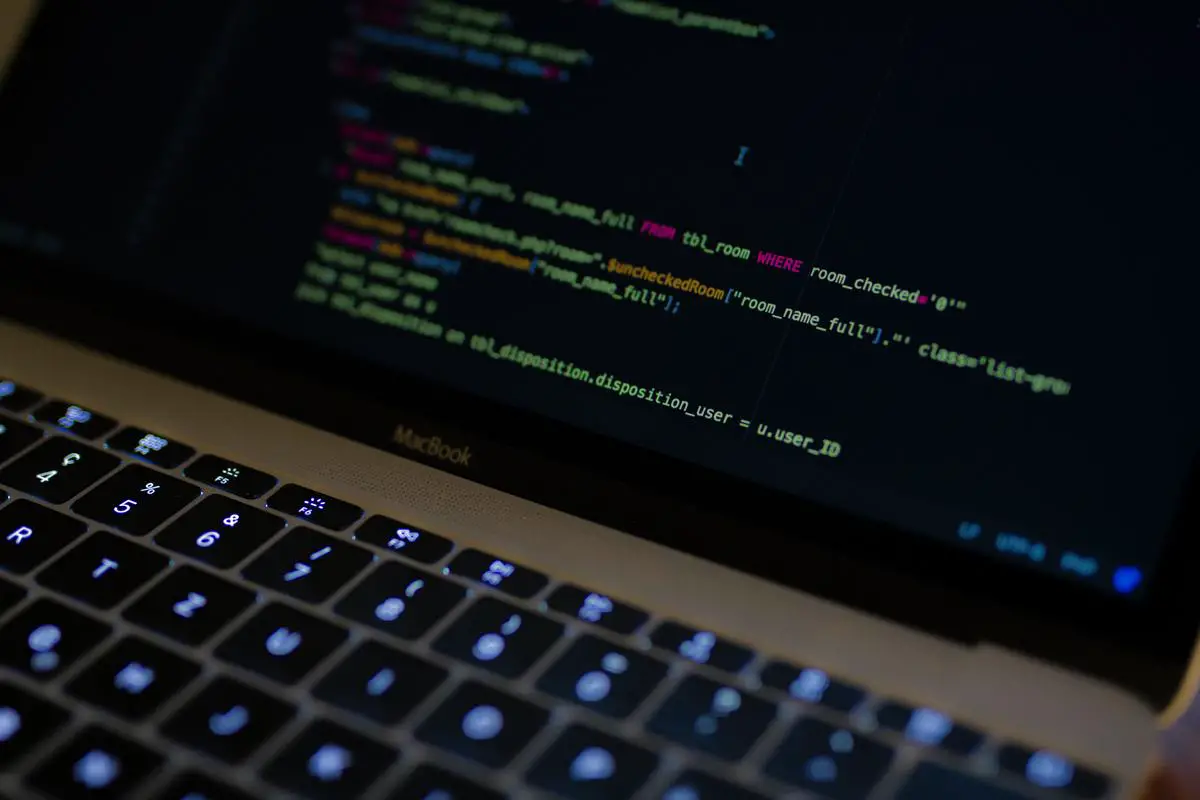
Additional Security and Privacy
Utilizing Your Laptop’s Inbuilt Privacy Settings
Windows laptops come equipped with a range of internal privacy settings that you can modify to suit your specific needs.
General privacy settings give you the power to dictate which applications have access to various parts of your system and personal information.
For example, you can specify which applications can use your camera, operate your microphone, or access your location details.
You also have the freedom to adjust diagnostic data settings to control the quantity and nature of diagnostic data that Microsoft receives.
Furthermore, activity history settings allow you to manage your interaction history with Microsoft’s products and services.
Windows Defender
Windows Defender is pre-installed security software on every Windows computer. It provides real-time protection against software threats like viruses and malware across email, apps, the cloud, and the web.
Windows Defender’s features include Virus & threat protection to scan for threats, Account protection to safeguard your identity, Firewall & network protection, App & browser control for safe browsing and downloads, and Device security and Device performance & health.
It also regularly updates itself to stay current with new threats.
Secure Web Browsing Practices
Secure browsing is a critical aspect of maintaining privacy and security on a Windows laptop. Some best practices include regularly clearing your browsing history and cookies, disabling autofill and password-saving features, using a secure browser, and always logging out of websites after your session.
Additionally, it’s important to be vigilant when downloading content or clicking on links, particularly from unknown sources or suspicious emails.
Virtual Private Networks (VPNs)
One of the recommended ways to ensure privacy while surfing the internet on a Windows laptop is through the use of a Virtual Private Network (VPN).
A VPN acts as a secure tunnel between your device and the internet, encrypting your data and hiding your online activity from potential hackers or trackers.
This helps protect sensitive information such as your IP address, location, and browsing activity. Windows has built-in settings to set up a VPN or you can opt for a reliable third-party VPN provider.
User Account Control
User Account Control (UAC) is a Windows security component that prevents unauthorized changes to the system. It provides a warning whenever changes that require administrator-level permission are initiated.
This is an effective tool against malicious software that can make suspicious changes without your knowledge but can be bothersome for certain users.
It’s advisable to keep this feature enabled unless you have a strong, specific reason for turning it off.
Enhancing Security Via Two-Factor Authentication
One of the foremost concerns for both enthusiasts and professionals when it comes to technology is security.
Specifically, the strengthening of authentication practices is directly tied to the protection of sensitive data.
Two-factor authentication, a measure necessitating two forms of identification for account or system access, provides an excellent reinforcement of your security setup. This could involve the combination of common elements such as a password and smart card, or it might entail a more personal, unique identifier like a fingerprint.
By enabling and correctly using two-factor authentication, you are erecting an important shield for your accounts, particularly for Microsoft and other significant systems or services on your Windows laptop.

Advanced Windows Features
Windows laptops are packed with a multitude of features, some of which go unnoticed or underutilized.
This section will guide you through some advanced features of your Windows laptop, including the Windows Registry, system tweaks, and hidden features.
As always, remember that these tools are powerful, and can drastically alter your system’s behavior. Use them with care, and always make sure to back up important files before making changes.
The Windows Registry
The Windows Registry is a database that stores low-level settings for both Windows itself and the applications installed on it. Think of it as the control center of your Windows laptop. Here’s how you can access and use it:
- Accessing the registry: Press the Windows key + R to open the Run dialog box. Type in `regedit` and press Enter. This will open the Registry Editor.
- Navigating the registry: The registry is divided into five sections, or ‘hives’. Each hive holds settings for different parts of your system. For instance, `HKEY_CURRENT_USER` contains settings for the current user, while `HKEY_LOCAL_MACHINE` contains system-wide settings.
- Modifying the registry: Before you make changes, remember to create a backup. You can do this by clicking File -> Export. To modify an entry, navigate to it, right-click, and select ‘Modify’.
Advanced System Tweaks
Your Windows laptop has a plethora of settings that you can tweak to optimize its performance or customize its behavior. Here are a few:
- Speed Up Boot Time: Navigate to the Start Menu and type in `msconfig`. Go to the ‘Boot’ tab and set the timeout to a lower value.
- Customize the Start Menu: Right-click on the taskbar and select ‘Settings’. You can choose which apps appear on the Start Menu, change its color, and more. You can also right-click on individual tiles to resize, move, or uninstall them.
- Make Windows Look Better: Go to ‘Settings -> Personalization’ and change themes, colors, fonts, and more to give your laptop a unique look.
Hidden Features
Windows is filled with hidden features that can enhance your experience:
- Secret Start Menu: Right-click on the Windows icon at the bottom left of your screen, and you’ll find a secret Start menu filled with useful features.
- Slide To Shutdown: Want a fun way to shut down your laptop? Right-click on your desktop and create a new shortcut. For the location, type: `%windir%\System32\SlideToShutDown.exe`. Now, when you click this shortcut, you’ll be able to slide to shut down your laptop.
- Dark Mode: Want to give your eyes a break? Enable dark mode! Go to Settings -> Personalization -> Colors, and choose ‘Dark’ under ‘Choose your default app mode’.
- Virtual Desktops: If you’re a multitasker, virtual desktops are your new best friend. Press Windows key + Tab to open the Task View, and click on ‘+ New Desktop’ to create a new virtual desktop. You can switch between them using Windows key + Ctrl + Left/Right arrow.
- Clipboard History: Press Windows key + V to access your clipboard history. This feature can come in handy when you need to copy and paste multiple items.
Windows Keyboard Shortcuts
Windows OS supports a variety of handy keyboard shortcuts to expedite tasks. Commands like Ctrl+C, Ctrl+V, and Ctrl+Z for copy, paste and undo have become second nature for many users.
However, there are a plethora of other shortcuts such as Win+M to minimize all windows, Win+Tab to switch between open apps, and Alt+Tab to toggle between the last two used programs.
With these advanced features, you can take your Windows experience to the next level. Remember to always be cautious when making changes and have fun exploring all that your Windows laptop has to offer.
Frequently Asked Questions:
Over the course of using your Windows laptop, you may encounter a few common issues or queries. Here, we have compiled a list of frequent user questions and their answers.
- How can I find out which version of Windows I’m using?
To find your Windows version, press the Windows key + R to open the Run dialog box, type `winver` and press Enter. A window will appear, displaying your current Windows version.
- My laptop isn’t running as fast as it used to. What can I do?
This could be due to a variety of reasons, such as outdated software, lack of space, or malware. Make sure your software is up-to-date, regularly clean up your system files, and run anti-virus scans.
- How do I create a system restore point?
Navigate to the Start Menu and type in `Create a restore point`. Select it, and in the System Protection tab, click on `Create…`. Follow the prompts to create a restore point.
- How can I change my laptop’s display resolution?
Right-click anywhere on your desktop and click on ‘Display settings’. Under the ‘Scale and layout’ section, you can change your display resolution.
- How do I install new fonts?
Download the font file, right-click on it, and select ‘Install’. The font will then be available across all programs on your laptop.
Remember, familiarizing yourself with your Windows laptop and its features is an ongoing process. Don’t hesitate to explore and learn, and most importantly, don’t forget to have fun doing it.
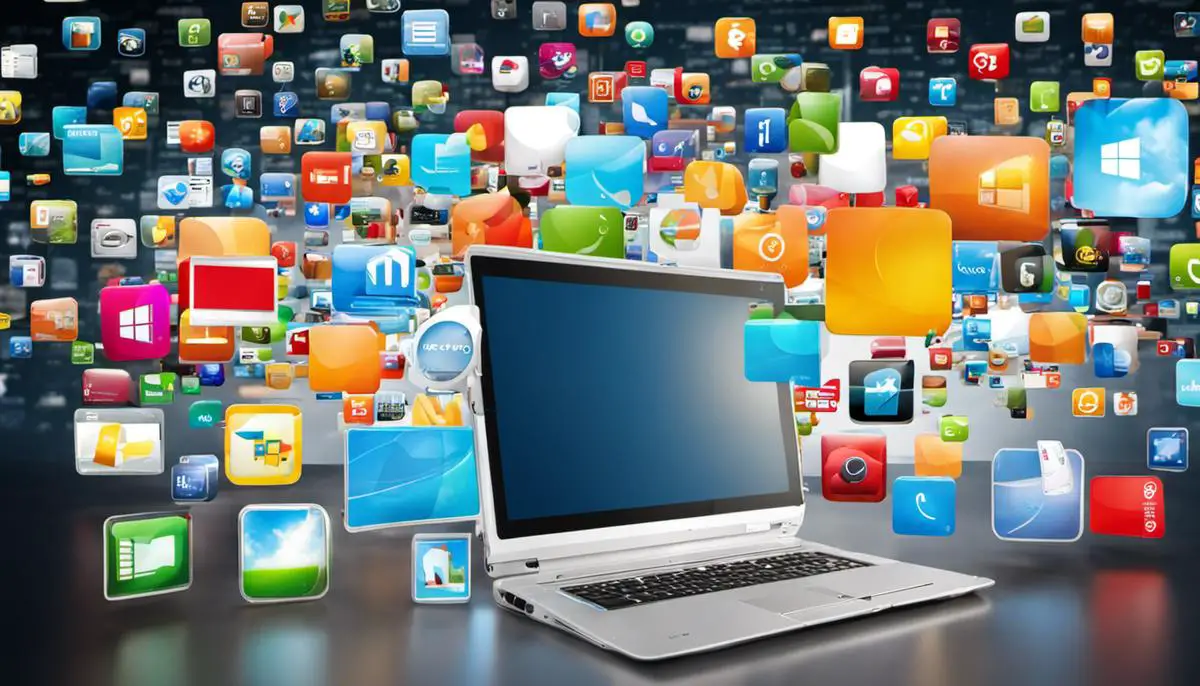
Conclusion and Further Resources
Throughout this guide, we’ve explored the intricacies of your Windows laptop, from basic operations to advanced features and hidden gems. Yet, the journey to mastery doesn’t end here.
The beauty of technology, and your Windows laptop in particular, is that there’s always something new to learn, a feature to explore, or a shortcut to discover.
As you continue this journey, here are some useful resources to assist you:
- Microsoft’s Official Website: This should be your first stop for any questions, downloads, or troubleshooting. You can find a wealth of information, from detailed guides to community answers (Microsoft Official Website).
- TechRadar: Known for its technology news and reviews, TechRadar frequently publishes tips and tutorials for Windows users (TechRadar).
- Windows Central: A leading source for Windows news and information, it also boasts an active forum where you can interact with other Windows users (Windows Central).
And don’t forget, there are also numerous tools out there to enhance your experience. From productivity apps like Microsoft Office and Notepad++ to security software like Bitdefender and Malwarebytes, the possibilities are endless.
In the end, remember that mastering your Windows laptop isn’t a destination, but a journey. A journey filled with discovery, learning, and even a few challenges along the way. But as you grow more comfortable and proficient, you’ll find this journey to be immensely rewarding. So keep exploring, keep learning, and here’s to making the most of your Windows experience.

J.S. is the owner, content creator, and editor at Upgrades-and-Options.com. I’ve worked in the IT and Computer Support field for over 20 years. The server hardware in my computer labs has mostly been IBM, but I’ve supported Dell, HP, and various other hardware. In addition, as part of my lab administrator responsibilities, I’ve learned, supported, and repaired/upgraded network hardware such as Cisco routers and switches. READ FULL BIO >>
- How Quantum Computing Could Impact Everyday Laptops
- What Is The Difference Between Lenovo’s Pens? (with Part Numbers)
- How To Wipe A Hard Drive Clean: 4 easy steps
- Maximize Laptop Performance: Mastering Overclocking
- Ultimate Guide to Gaming Laptop Heat Management
- How to Set Up Dual Monitors for Your Laptop at Home
- How Do I Run Diagnostics on My Lenovo?
- Lenovo Legion Performance Tech Explored: Next-Level Gaming Experience

